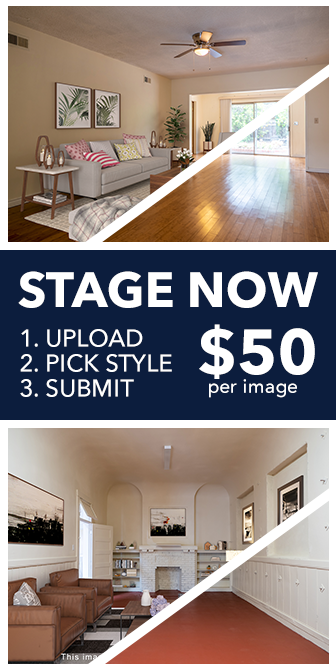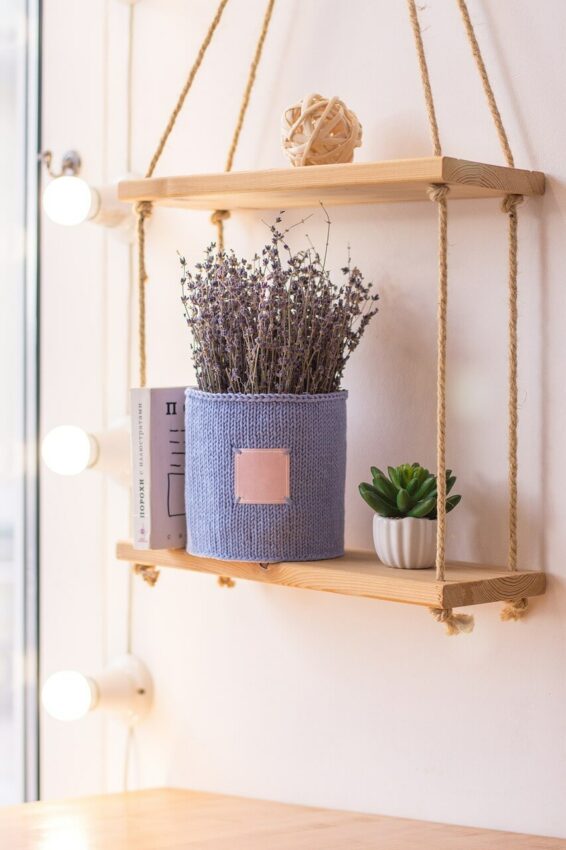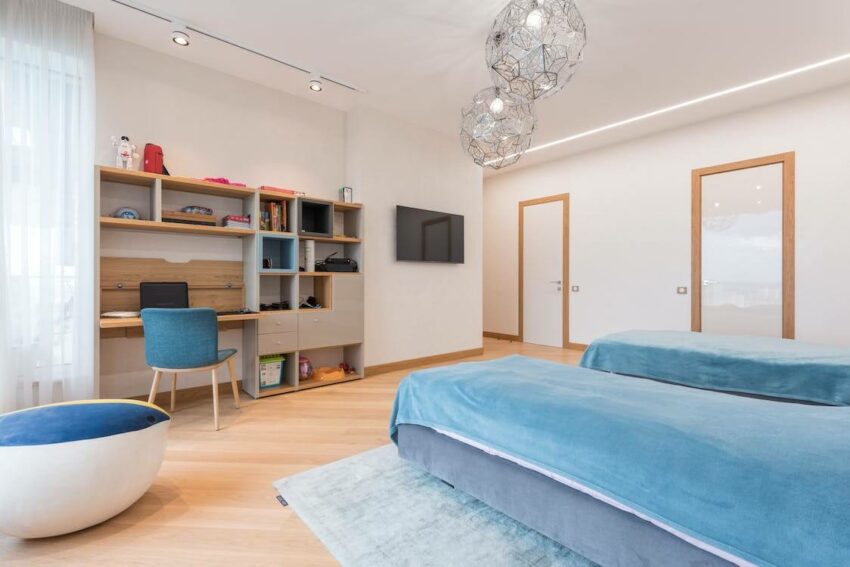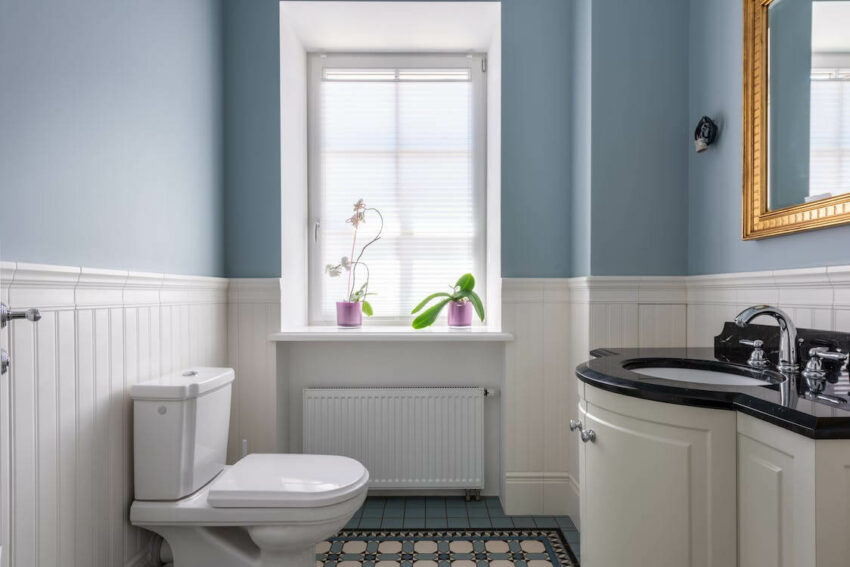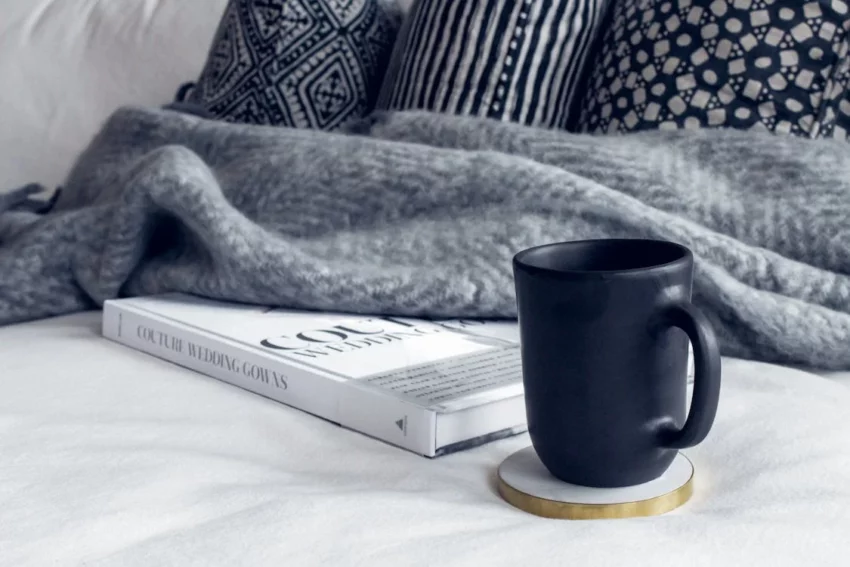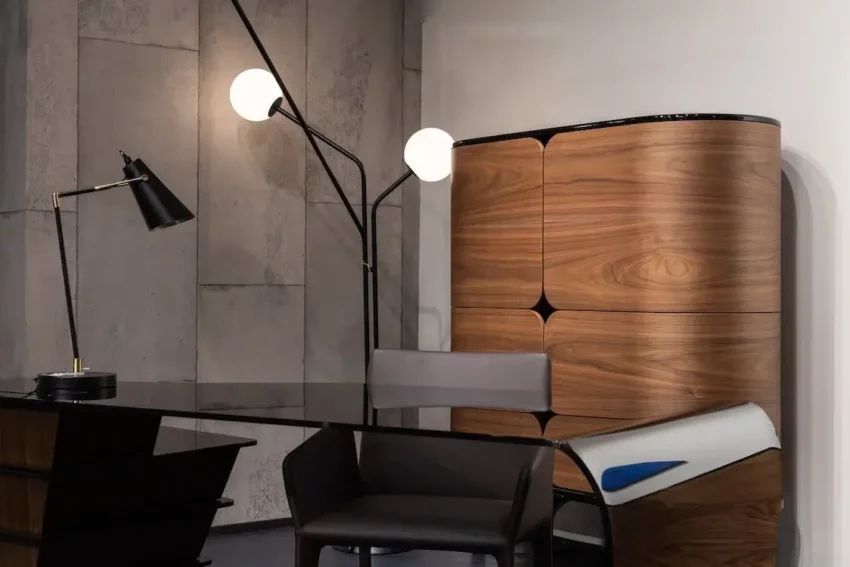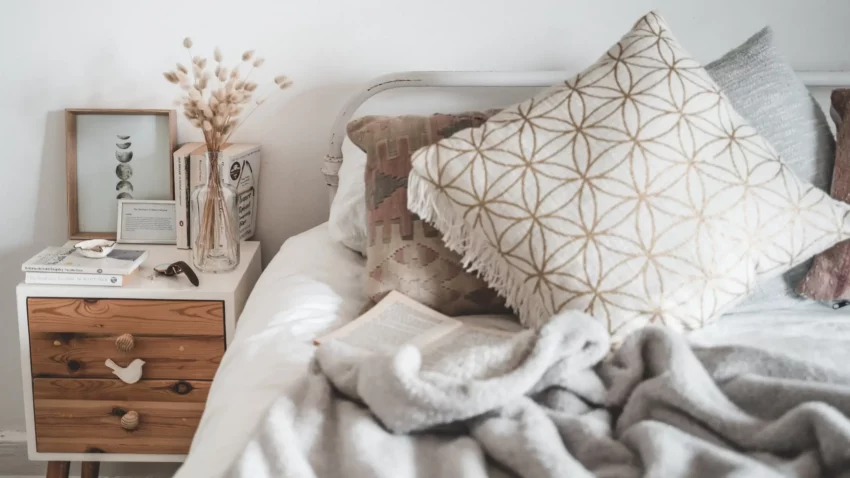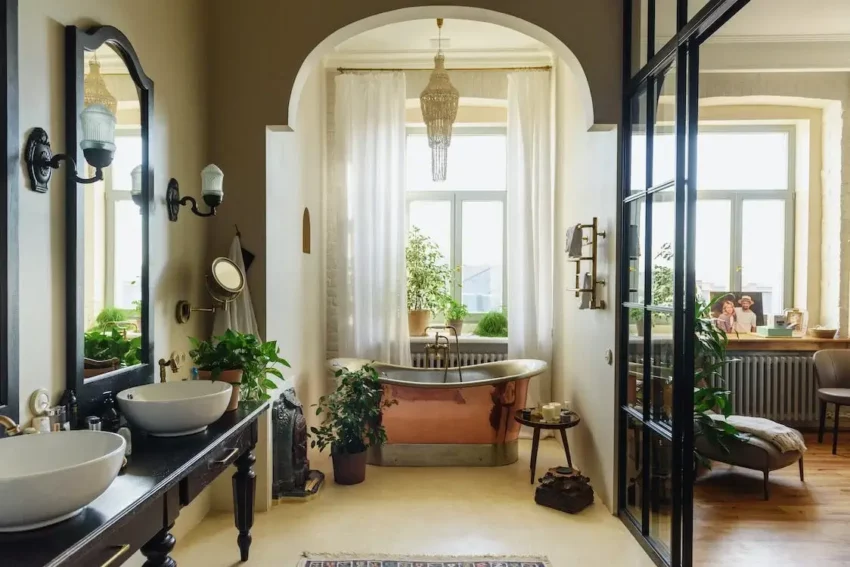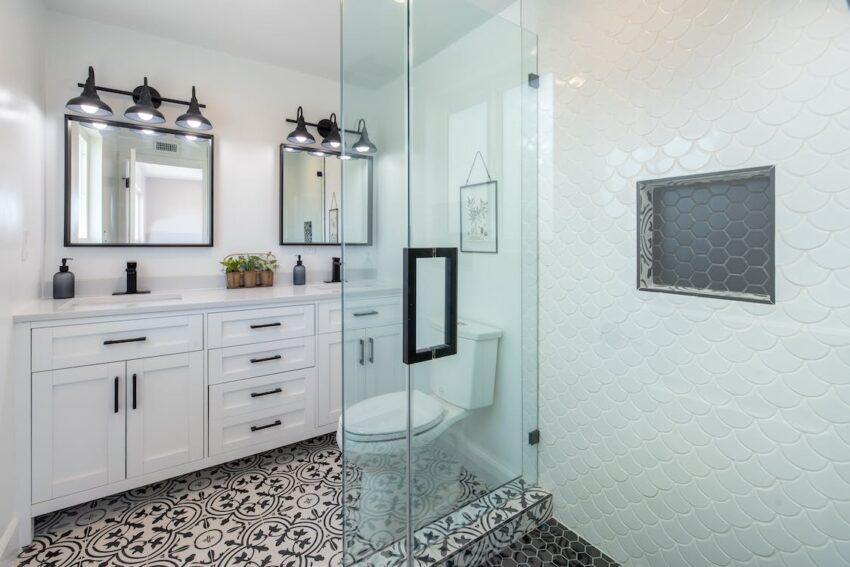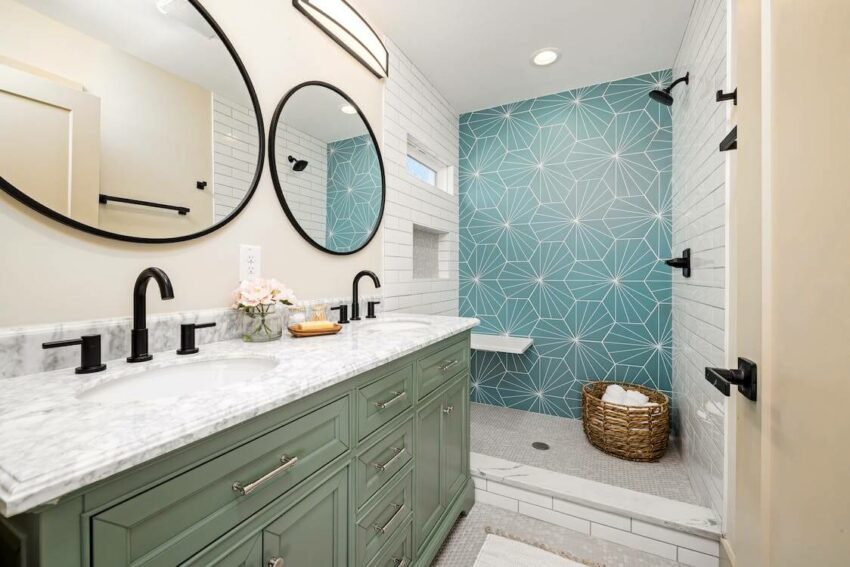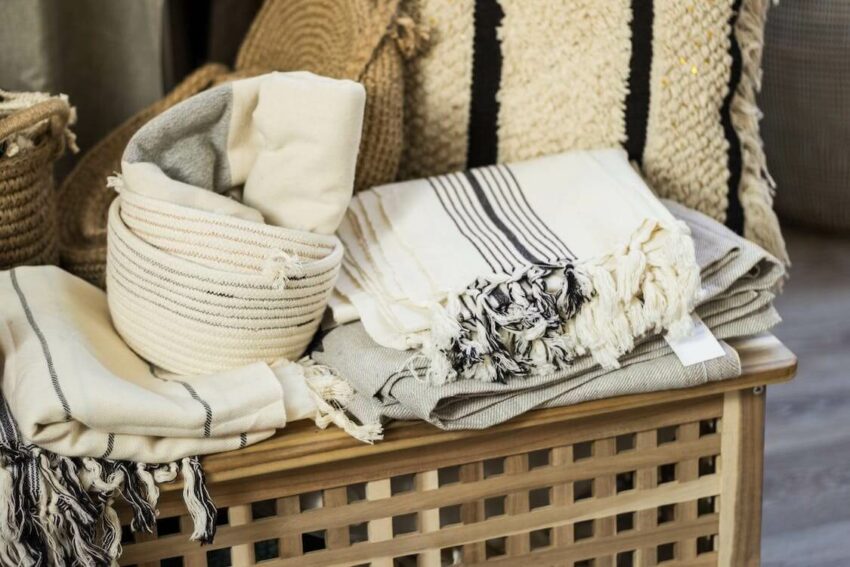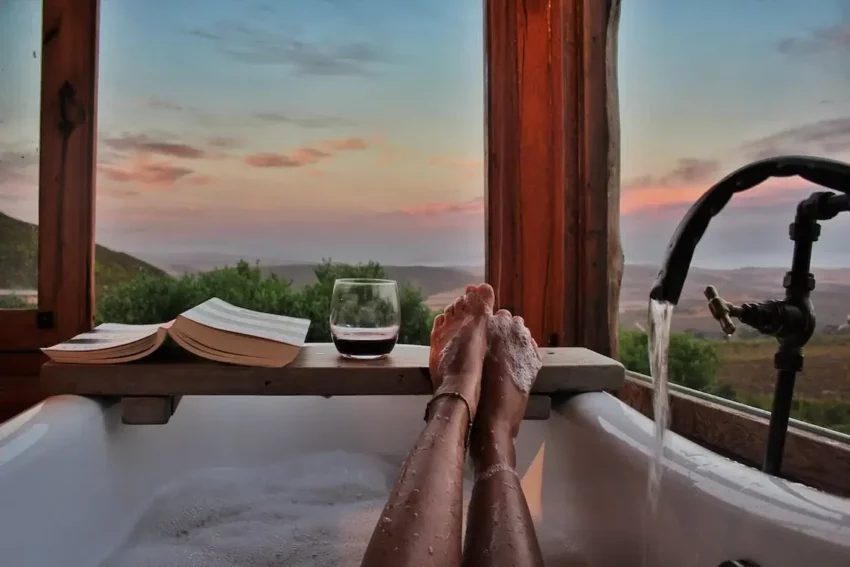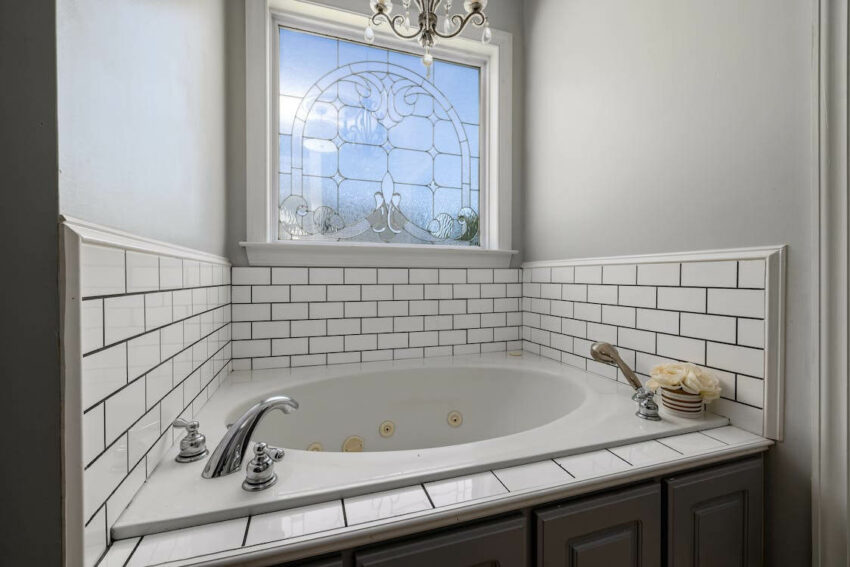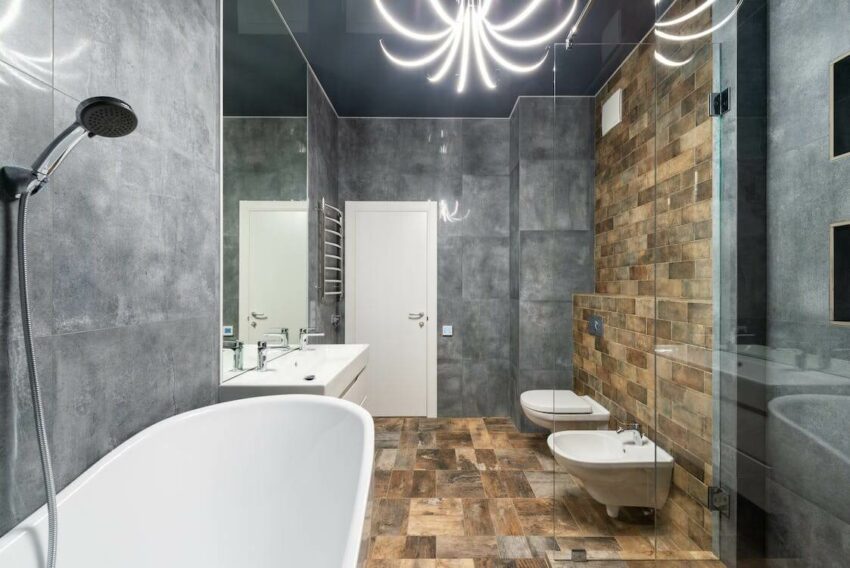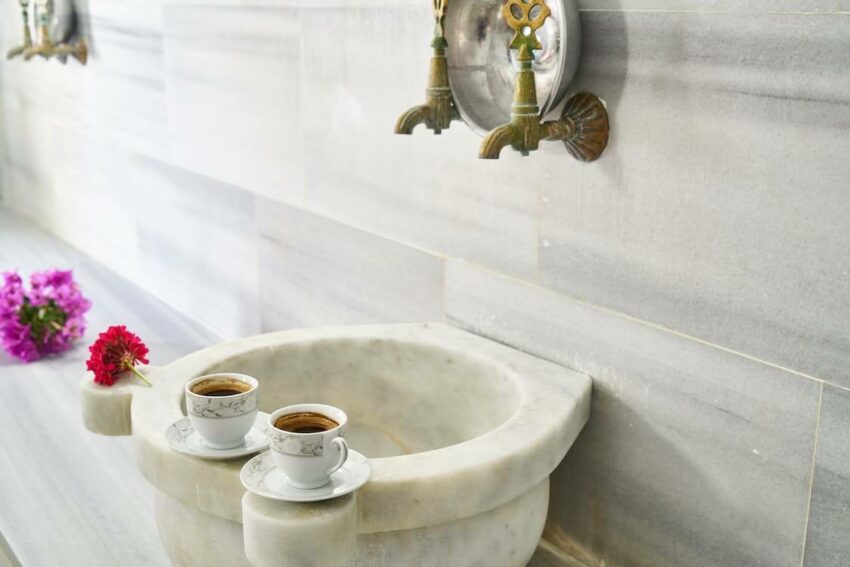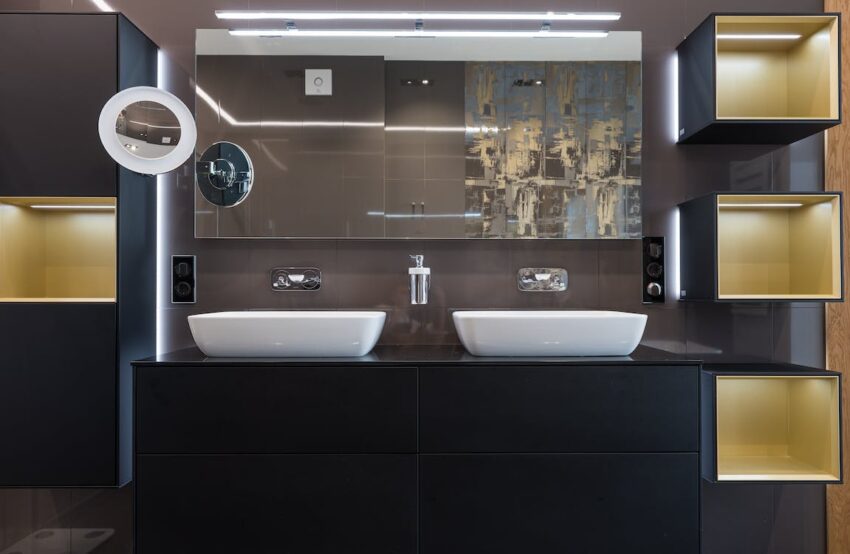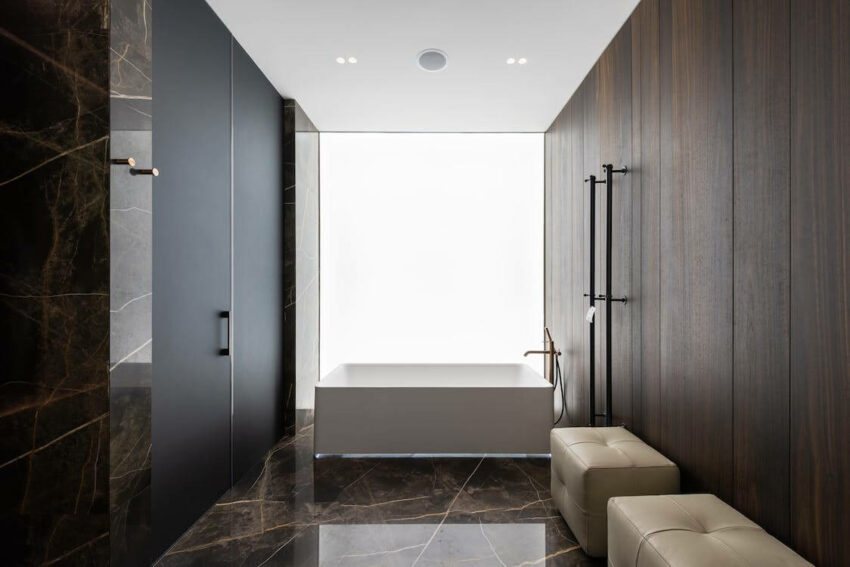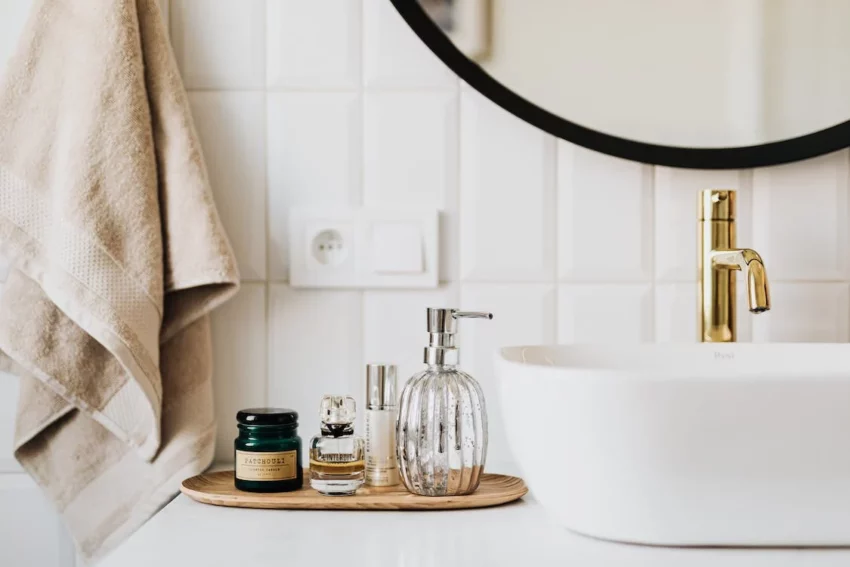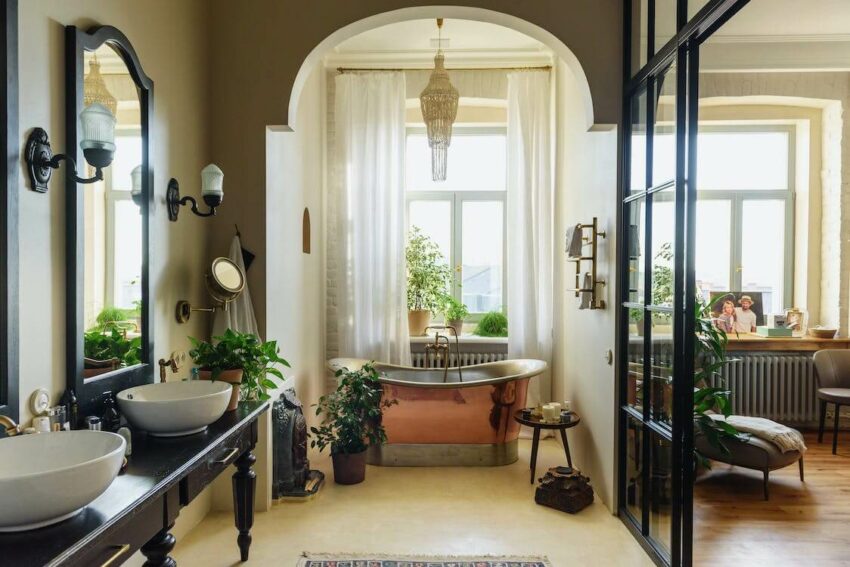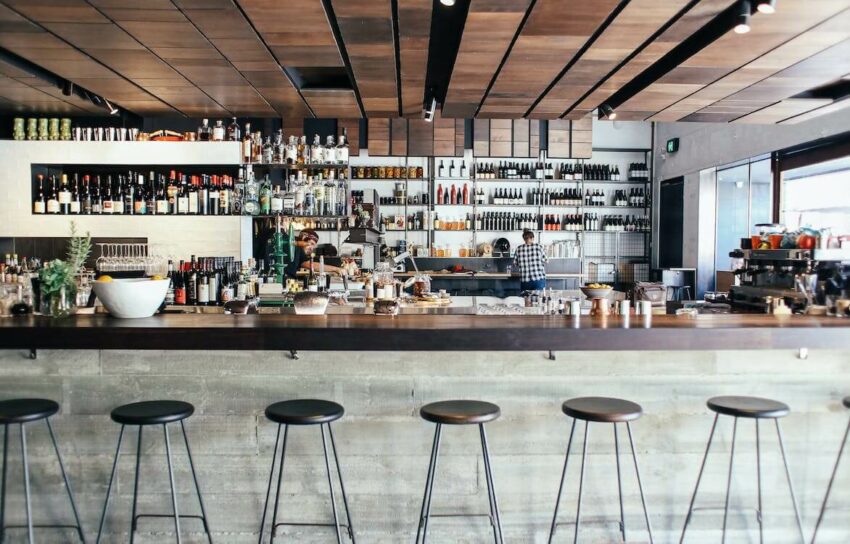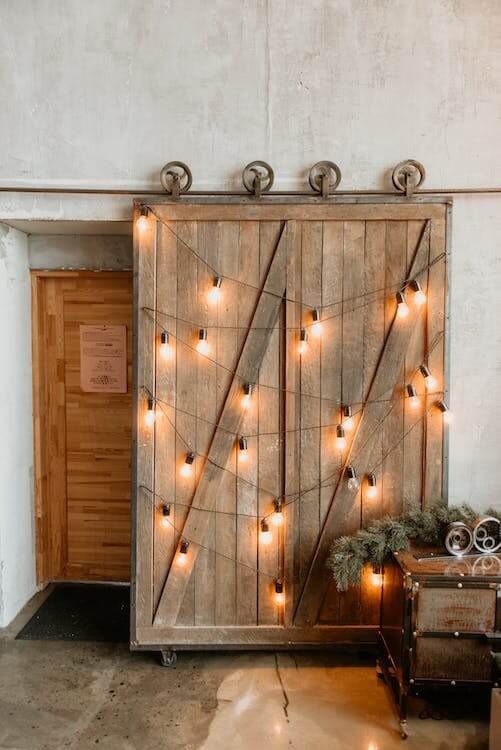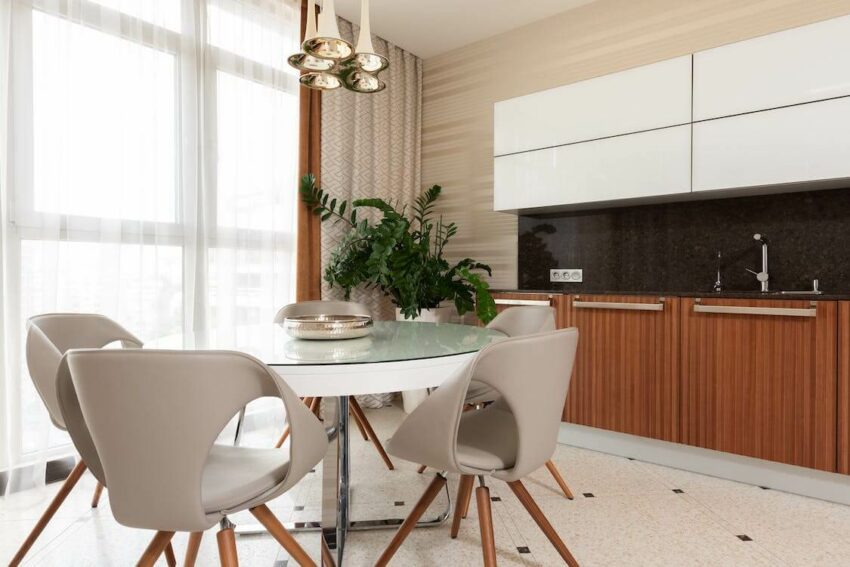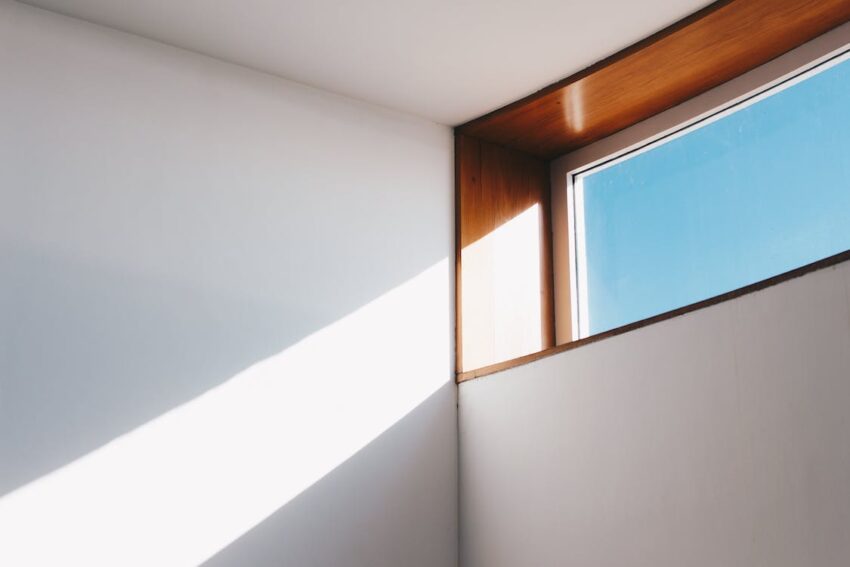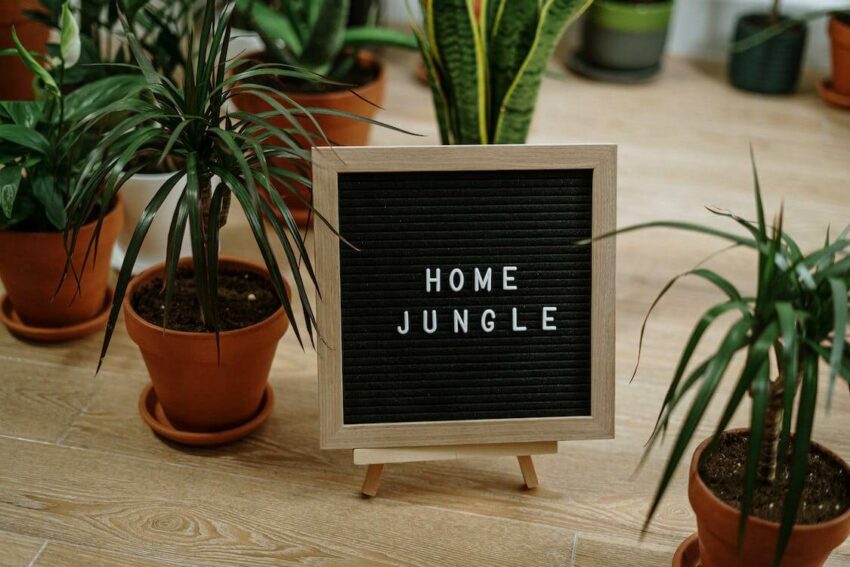“Exploring the Evolution of Interior Design Aesthetics”
Interior design is a creative and transformative process that merges functionality with aesthetics, turning empty spaces into captivating and inviting environments. In this blog post, we delve into the world of interior design and explore the essential role of aesthetics in shaping the ambiance and visual appeal of our living and working spaces.
Join us on this journey as we uncover the key principles and influential trends that define interior design aesthetics.
Creating Harmony: The Essence of Interior Space Aesthetic
An aesthetic is defined by a set of characteristics, principles, and elements that shape the overall visual and sensory experience of something, whether it’s an artwork, design, environment, or any other creative expression. It encompasses the style, mood, and overall appeal that evokes a specific emotional or sensory response in individuals. Here are some key factors that contribute to defining an aesthetic:

- Visual Elements: The visual elements, such as color, shape, texture, pattern, and form, play a vital role in defining an aesthetic. The combination and arrangement of these elements create a distinct visual language that influences the overall aesthetic experience.
- Style and Theme: The chosen style or theme sets the foundation for an aesthetic. It can be influenced by historical periods, cultural references, artistic movements, or personal preferences. The style and theme guide the selection of materials, furniture, artwork, and other design elements to create a cohesive look and feel.
- Mood and Atmosphere: Aesthetic is closely linked to the mood and atmosphere it creates. Whether it’s a serene and calming ambiance, an energetic and vibrant space, or a nostalgic and romantic setting, the overall mood is an essential aspect of defining an aesthetic.
- Principles and Principles: Aesthetic principles, such as balance, harmony, proportion, rhythm, contrast, and unity, provide guidelines for creating a visually pleasing composition. These principles help maintain coherence and cohesion within an aesthetic, ensuring that the elements work together harmoniously.
- Influences and References: Aesthetics can be influenced by various sources, including cultural traditions, historical movements, nature, art, fashion, and technology. These influences shape the aesthetic direction and provide a context for creative expression.
- Personal Expression: Aesthetics often reflect the personal style, preferences, and intentions of the creator or individual. It allows for self-expression and the opportunity to communicate ideas, emotions, or values through the chosen aesthetic elements.
- Sensory Experience: Aesthetics go beyond visual appeal and can encompass other sensory experiences, such as tactile sensations, auditory elements, and even scents. Consideration of how a space or design engages multiple senses contributes to a holistic aesthetic experience.

It’s important to note that aesthetics are subjective, and different individuals may have different interpretations and preferences. What one person finds aesthetically pleasing, another may not. Nonetheless, aesthetics provide a framework and language through which we can appreciate and understand the artistic and design choices made in various creative disciplines.
Our Most Requested Interior Design Aesthetics
In the world of interior design, certain aesthetics have captured the imagination and preferences of many, becoming the most requested styles that continue to shape contemporary spaces. These sought-after interior design aesthetics embody distinctive themes, evoke specific moods, and reflect the individuality and taste of those who seek them. In this blog post, we will explore the most requested interior design aesthetics, delving into their defining characteristics and explaining why they hold such widespread appeal. From the timeless elegance of traditional design to the sleek minimalism of modern interiors, and from the cozy charm of Scandinavian-inspired spaces to the eclectic fusion of diverse styles, we will uncover the essence of these coveted aesthetics and showcase their enduring popularity in today’s design landscape. Whether you’re seeking inspiration for your own space or simply intrigued by the trends that captivate design enthusiasts, join us on this journey through the most requested interior design aesthetics.
90s Aesthetic
The 90s aesthetic has experienced a resurgence in popularity, capturing the nostalgia and unique spirit of that era. Defined by vibrant colors, bold patterns, and a mix of influences from grunge, hip-hop, and pop culture, the 90s aesthetic exudes an unmistakable sense of energy and non-conformity. From neon hues and geometric shapes to oversized logos and playful typography, this aesthetic embodies a carefree and rebellious attitude. The 90s was a decade marked by technological advancements, and elements like cassette tapes, VHS tapes, and pixelated graphics often find their way into the design, evoking a sense of retro charm. With its distinctive blend of nostalgia, vibrancy, and pop references, the 90s aesthetic continues to captivate designers and enthusiasts, providing a way to celebrate a time that shaped popular culture and left an indelible mark on the world of design. Read our full length article on the 90s aesthetic here.
Boho Aesthetic
The Boho aesthetic, short for bohemian, has gained significant popularity in recent years for its free-spirited and eclectic vibe. Rooted in the counterculture movements of the 1960s and 1970s, the Boho aesthetic celebrates individuality, artistic expression, and a carefree lifestyle. This aesthetic embraces a mix of patterns, colors, textures, and cultural influences, resulting in a visually dynamic and relaxed atmosphere. Earthy tones, natural materials like rattan and jute, and an abundance of plants create a connection to nature, while layered textiles, macramé, and vintage finds add a sense of bohemian charm. Whether it’s the vibrant Moroccan rugs, hanging tapestries, or mismatched furniture, the Boho aesthetic encourages a sense of creativity, personalization, and an appreciation for the unique. It’s a style that invites you to express yourself authentically, creating spaces that reflect your adventurous spirit and love for self-expression. Read on about boho aesthetic in interior design here.
Cozy Fall Aesthetic
The cozy fall aesthetic is a celebration of warmth, comfort, and the enchanting beauty of autumn. As the leaves turn vibrant hues of red, orange, and yellow, this aesthetic embraces the spirit of the season, creating inviting and snug spaces. Rich, earthy colors like deep browns, warm oranges, and rustic reds set the tone, while plush textiles such as faux fur, chunky knits, and soft blankets invite you to curl up and embrace the coziness. Natural elements like wood, dried flowers, and rustic accents contribute to the organic charm, evoking a sense of being nestled in a cabin retreat or a charming cottage. Soft, ambient lighting from candles or warm-hued fairy lights adds a touch of magic, enhancing the cozy ambiance. Whether it’s the crackling of a fireplace or the aroma of spiced candles, the fall aesthetic envelops you in a comforting embrace, inviting you to savor the simple joys of the season and create lasting memories with loved ones. Learn more about cozy fall aesthetic here.
Modern Aesthetics
Modern aesthetics, also known as contemporary design, embody a sleek and minimalist approach that emphasizes simplicity, clean lines, and functionality. This aesthetic style is characterized by open spaces, a neutral color palette, and an emphasis on natural light. With a focus on form following function, modern design often incorporates innovative materials, such as glass, steel, and concrete, resulting in a visually striking and uncluttered environment. Furniture and decor pieces are often streamlined and geometric, showcasing a blend of form and practicality. Technology integration is also a key feature of modern aesthetics, with smart home systems and minimalist gadgetry seamlessly integrated into the design. The modern aesthetic provides a sense of sophistication and elegance, creating spaces that feel contemporary, uncluttered, and effortlessly stylish. It embodies the spirit of the present and looks towards the future, celebrating the marriage of design, functionality, and simplicity. You can find our complete guide to modern aesthetics here.
Retro Aesthetics
Retro aesthetics encapsulate the charm and nostalgia of bygone eras, transporting us back in time with their vintage appeal. From the colorful and psychedelic patterns of the 1960s to the neon lights and geometric designs of the 1980s, retro aesthetics capture the essence of specific periods in history. The retro aesthetic celebrates bold colors, kitschy motifs, and unique design elements that have stood the test of time. Whether it’s the rounded curves of mid-century furniture, the vinyl records spinning on a turntable, or the nostalgic typography reminiscent of old signage, retro aesthetics bring a sense of whimsy and familiarity to contemporary spaces. This aesthetic allows us to rediscover and appreciate the aesthetics that have shaped our cultural heritage, infusing our environments with a delightful vintage flair. Whether you’re embracing the funky patterns of the ’70s or the neon-lit nostalgia of the ’80s, retro aesthetics offer a chance to create spaces that evoke a sense of nostalgia, fun, and an appreciation for the styles of the past. Looking for more retro aesthetic images, see our full length article for more inspiration and ideas.
Soft Aesthetic
The soft aesthetic is a gentle and soothing design approach that aims to create a sense of tranquility and comfort. This aesthetic embraces muted tones, pastel colors, and delicate textures, evoking a serene and dreamy atmosphere. Soft, natural light, flowing fabrics, and plush materials like velvet or cashmere contribute to the overall softness and inviting nature of this aesthetic. Floral patterns, whimsical details, and romantic elements are often incorporated to enhance the delicate and graceful ambiance. The soft aesthetic seeks to create spaces that feel cozy, gentle, and nurturing, providing a respite from the fast-paced world outside. Whether it’s a bedroom adorned with billowy curtains, a living room with plush cushions and gentle lighting, or a serene home office with pastel accents, the soft aesthetic embraces a sense of calmness and invites you to unwind and relax in a harmonious environment. We have a full length article on the soft aesthetic in interior design here.
Spring Aesthetic
The spring aesthetic encapsulates the rejuvenation and vibrancy of the season, bringing forth a sense of renewal and natural beauty. This aesthetic embraces a fresh and light-hearted approach, drawing inspiration from blooming flowers, chirping birds, and the soft colors of nature’s palette. Soft pastel hues, such as blush pinks, mint greens, and baby blues, dominate the spring aesthetic, creating an atmosphere of tranquility and serenity. Floral patterns, botanical prints, and nature-inspired motifs add a touch of whimsy and organic charm. Light and airy fabrics, like sheer curtains or flowing linens, enhance the ethereal quality of the space. Bringing the outdoors in, potted plants and bouquets of fresh flowers breathe life into the environment, infusing it with the scents and textures of springtime. The spring aesthetic invites us to embrace the beauty of nature’s awakening, filling our spaces with a sense of joy, optimism, and a gentle reminder of the cycles of life. Read more about spring aesthetic.
Beach Aesthetic
Other Popular Interior Design Aesthetics
An interior design aesthetic refers to a specific style or theme that guides the overall look and feel of a space. It encompasses the visual elements, materials, colors, patterns, and furniture choices that come together to create a cohesive and distinctive ambiance. An aesthetic sets the tone for an interior design project and reflects the preferences, personality, and purpose of the space.

Interior design aesthetics can range from traditional to contemporary, minimalistic to eclectic, and everything in between. Each aesthetic has its own characteristics, principles, and influences that shape its overall design approach. Some popular interior design aesthetics include:
- Traditional: Characterized by ornate details, rich colors, and classic furnishings, traditional aesthetics draw inspiration from historical periods, such as Victorian or Georgian eras. This aesthetic exudes elegance, symmetry, and a sense of timelessness.
- Modern/Contemporary: Modern or contemporary aesthetics focus on clean lines, minimalism, and simplicity. This style often incorporates sleek furniture, neutral color palettes, and open spaces, emphasizing functionality and a sense of spaciousness.
- Industrial: Inspired by converted industrial spaces, the industrial aesthetic showcases raw and unfinished elements like exposed brick, metal accents, and utilitarian objects. This style often combines elements of rustic and urban design, creating a rugged yet chic atmosphere.
- Scandinavian: Scandinavian aesthetics prioritize light, airy spaces with a focus on natural materials, neutral color palettes, and functional design. This style emphasizes simplicity, cozy textures, and a connection to nature, resulting in a warm and inviting ambiance.
- Mid-Century Modern: Reflecting design trends from the mid-20th century, the mid-century modern aesthetic features clean lines, organic shapes, and a mix of materials such as wood, plastic, and metal. This style often incorporates bold colors, geometric patterns, and iconic furniture pieces.
- Bohemian: The bohemian aesthetic embraces a free-spirited and eclectic mix of patterns, colors, and cultural influences. It celebrates individuality, creative expression, and a relaxed, layered atmosphere, often incorporating vintage or handmade elements.
These are just a few examples of interior design aesthetics, and there are many more to explore. Each aesthetic offers a unique approach to creating a desired atmosphere, expressing personal style, and meeting the functional needs of a space.
The History of Design Aesthetics
Design aesthetics have played a significant role in shaping human experiences and perceptions of the world around us. From the ornate patterns of ancient civilizations to the sleek minimalism of contemporary design, aesthetics have evolved and transformed throughout history. In this blog post, we will take a journey through time to uncover the fascinating history of design aesthetics, shedding light on their cultural, social, and artistic influences.
Ancient Wonders:
Aesthetics of Early Civilizations Ancient civilizations like Egypt, Mesopotamia, and Greece laid the foundation for design aesthetics. From the grandeur of the pyramids to the intricate details of pottery, these cultures emphasized symbolism, harmony, and balance. We delve into the captivating aesthetics that emerged during this period and their lasting impact on design.
Renaissance Rebirth:
The Triumph of Humanism The Renaissance period witnessed a remarkable shift in design aesthetics. Inspired by humanist philosophies, artists and architects embraced realism, perspective, and proportion. From Michelangelo’s Sistine Chapel to Da Vinci’s Vitruvian Man, we explore the revival of classical aesthetics and the birth of new artistic forms.
Industrial Revolution:
Form Follows Function The advent of the Industrial Revolution brought about a radical transformation in design aesthetics. With the rise of mass production, efficiency and functionality became paramount. The works of designers like Charles and Ray Eames showcased a marriage between practicality and beauty, as we examine how the shift towards modernism shaped aesthetics in this era.
Art Nouveau:
Embracing Nature’s Curves In the late 19th and early 20th centuries, the Art Nouveau movement emerged, celebrating organic forms and intricate detailing. From the sinuous lines of Hector Guimard’s Paris Metro entrances to the masterpieces of Gustav Klimt, we explore the fascination with nature and the merging of art and design during this period.
Minimalism:
Stripping Down to Essence The 20th century witnessed the rise of minimalism, characterized by simplicity, clean lines, and functionality. Designers like Dieter Rams and the Bauhaus school embraced the “less is more” philosophy, profoundly influencing aesthetics in architecture, product design, and graphic design. We delve into the allure of minimalism and its enduring impact on contemporary aesthetics.

The history of design aesthetics is a testament to the ever-evolving nature of human creativity. From the intricate beauty of ancient civilizations to the simplicity of contemporary minimalism, aesthetics have reflected our values, aspirations, and cultural shifts. By understanding the rich tapestry of design aesthetics throughout history, we gain a deeper appreciation for the power of aesthetics to shape our world and enrich our lives.
Quotes About Design and Aesthetic
- “Simplicity is the ultimate sophistication.” – Leonardo da Vinci
- “Design is not just what it looks like and feels like. Design is how it works.” – Steve Jobs
- “Good design is obvious. Great design is transparent.” – Joe Sparano
- “Design is intelligence made visible.” – Alina Wheeler
- “The details are not the details. They make the design.” – Charles Eames
- “Design is a solution to a problem. Art is a question to a problem.” – John Maeda
- “Design is not just about making things beautiful; it’s about making things work beautifully.” – Roger Martin
- “The best design is the one you don’t notice because it works so seamlessly.” – Unknown
- “Design is where science and art break even.” – Robin Mathew
- “Good design is all about making other designers feel like idiots because the idea wasn’t theirs.” – Frank Chimero
How to Communicate Aesthetic to Your Interior Designer
Communicating with an interior designer about your desired aesthetic is crucial to ensure that your vision is understood and translated into the design process. Here are some tips to effectively convey your aesthetic preferences:
- Gather Inspiration: Before meeting with the interior designer, collect visual references that capture your desired aesthetic. Create a mood board or gather images from magazines, online platforms, or social media. This will provide a visual representation of your style and serve as a starting point for discussion.
- Use Descriptive Language: Use descriptive words and adjectives to convey the mood, atmosphere, and specific elements you want to incorporate. For example, if you desire a modern aesthetic, mention words like sleek, minimalistic, and clean lines. If you prefer a rustic aesthetic, mention words like warm, cozy, and natural textures.
- Share Examples: Along with verbal descriptions, show examples of spaces or designs that resonate with your desired aesthetic. These visual references can help the interior designer understand your preferences more effectively. Discuss what aspects of each example you find appealing and how you envision incorporating them into your own space.
- Be Open to Collaboration: While it’s important to communicate your preferences, also be open to the interior designer’s expertise and suggestions. Designers bring a wealth of knowledge and experience to the table, and they can provide valuable insights and innovative ideas that align with your aesthetic vision.
- Discuss Functionality: Aesthetics are important, but it’s equally essential to communicate your functional needs and lifestyle requirements. Clarify how you intend to use the space, any specific features or elements that are essential to your daily activities, and any specific considerations that should be taken into account.
- Communicate Preferences in Context: Provide information about the overall context of your project, such as the purpose of the space (e.g., residential, commercial, hospitality), the target audience, and any constraints or guidelines that may influence the design process.
- Ask for Clarification: If you have any questions or uncertainties about certain design concepts or terms, don’t hesitate to ask the interior designer for clarification. Clear communication is key to avoiding misunderstandings and ensuring a successful collaboration.
Remember, effective communication is a two-way street. Be attentive, actively listen to the designer’s insights and suggestions, and maintain an open and collaborative dialogue throughout the design process.

Where to Gather Images for a Design Aesthetic
There are several places where you can gather images and visual inspiration for your design aesthetic. Here are some popular sources:
- Online Platforms: Websites and online platforms dedicated to design and aesthetics can be a treasure trove of inspiration. Pinterest, Houzz, and Instagram are popular platforms where you can search for specific design aesthetics, browse through curated collections, and save images for future reference.
- Design Magazines and Books: Interior design magazines and books offer a wealth of visual inspiration. Look for publications that specialize in design, architecture, and home decor. Flip through the pages, tear out or bookmark images that catch your eye, and create a physical mood board or digital folder to keep track of your favorites.
- Social Media: Follow interior designers, design enthusiasts, and home decor accounts on platforms like Instagram. Many designers and bloggers share inspiring images of their work, showcasing different design aesthetics. Explore relevant hashtags to discover new ideas and accounts that align with your aesthetic preferences.
- Home Decor Stores: Visit local home decor stores, showrooms, or design centers. They often have displays and vignettes that showcase different design aesthetics. Take photos or collect brochures and catalogs for reference.
- Art Galleries and Exhibitions: Visit art galleries, museums, and exhibitions, as they can provide inspiration for color palettes, patterns, textures, and artistic influences. Observe the artwork and installations and take note of any elements that resonate with your desired aesthetic.
- Interior Design Websites and Blogs: Explore interior design websites and blogs that feature design projects, case studies, and articles on various aesthetics. These platforms often provide detailed descriptions, before-and-after photos, and insights into the design process.
- Travel and Nature: Draw inspiration from your surroundings. Look for design inspiration during your travels, whether it’s architectural details, local craftsmanship, or natural landscapes. Take photos and document anything that captures your attention and reflects your aesthetic preferences.
Remember, the goal is to gather a diverse range of images that collectively represent your desired aesthetic. Aim for a mix of overall room designs, specific details, color schemes, textures, patterns, and any other elements that contribute to the aesthetic you’re seeking.












